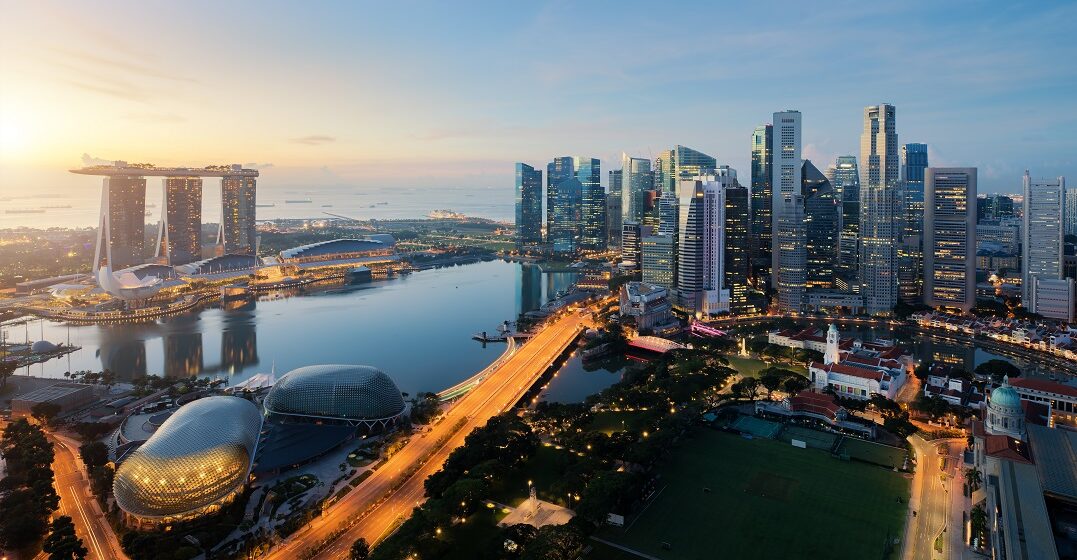by Laura Jones
Updated on January 5, 2024
Singapore is an incredibly multicultural country, which is reflected in its national languages. There are four recognized languages in Singapore: English, Malay, Mandarin and Tamil. These languages reflect the main ethnic groups in the South-East Asian nation, but there are many other languages spoken here too, including Singlish. Around 75% of people in Singapore are bilingual, far more than in the UK or the US. Let’s learn more about what the language is in Singapore.
If there is one language you can use almost everywhere in Singapore, it’s English. Singapore uses English as a lingua franca for its multicultural citizens so that Malay speakers can communicate with Tamil speakers and so on. English is also the primary language of business and government in Singapore and, according to the 2020 census, it is now the most-spoken language at home in Singapore. English is also used as a language of communication in schools, though students also study in one of the three other recognized languages.
People in Singapore tend to speak British English rather than American English, but they do have their own creole language, often called Singlish (Singaporean English). Singlish contains elements of many other languages spoken in Singapore, including Tamil, Malay and Mandarin, as well as other Chinese languages. Since 2000, the government of Singapore has been trying – and mainly failing! – to eradicate Singlish, as they consider it incorrect. However, it’s generally better to speak Standard English rather than Singlish in business contexts.
Here are some Singlish terms you might hear wandering the vibrant streets of Singapore:
Alamak! (Ah-lah-mak) – an expression of shock, similar to “Oh no!” or “Oh my God!”
Chope (joh-pe) – to reserve a place somewhere by leaving something on it. This is often done by leaving a packet of free tissues, ubiquitous in Singapore, on a table in a hawker center (an open-air food court) or fast-food restaurant.
Tabao (da-bao) – if you don’t want to “chope” a table, maybe you want your food tabao, which means bagged for takeaway.
Another national language of Singapore is Malay and the Malay people are recognized as the indigenous inhabitants of the country. The Singaporean national anthem is sung in Malay and is called Majulah Singapura (Onward Singapore). Just under 10% of Singapore’s inhabitants speak Malay at home. Malay is also spoken in Malaysia, Brunei and Indonesia.
Singapore has a large ethnic Chinese population who speak a range of Chinese dialects, including Mandarin, Cantonese and Hokkien. Chinese Singaporeans make up the largest ethnic group in the country. In 1979, the Prime Minister of Singapore launched a Speak Mandarin Campaign, encouraging the Chinese population to unite under the same primary language. It was largely successful, as fewer people now speak other Chinese languages than before. However, the percentage of people who speak Mandarin at home in Singapore is falling.
The nationally recognized Indian language of Singapore is Tamil, as many of Singapore’s Indian population came from Tamil Nadu in South India. Around 2.5% of Singapore’s population speak primarily Tamil at home, with around 5% speaking it as a second language. Students in Singapore can study in Tamil, as well as in other Indian languages including Punjabi, Bengali and Gujurati.
Singapore Sign Language is a combination of Shanghainese Sign Language (SSL), American Sign Language (ASL) and locally developed signs. Though it’s not recognized as a national language, it is recognized by the local Deaf community.
Visitors to Singapore will be able to get by perfectly easily in English. However, if you’re visiting South East Asia’s smallest country, why not take the opportunity to practice some Malay, Mandarin or Tamil too? Better yet, fit in with the locals by learning some Singlish to use in the hawker centers.
